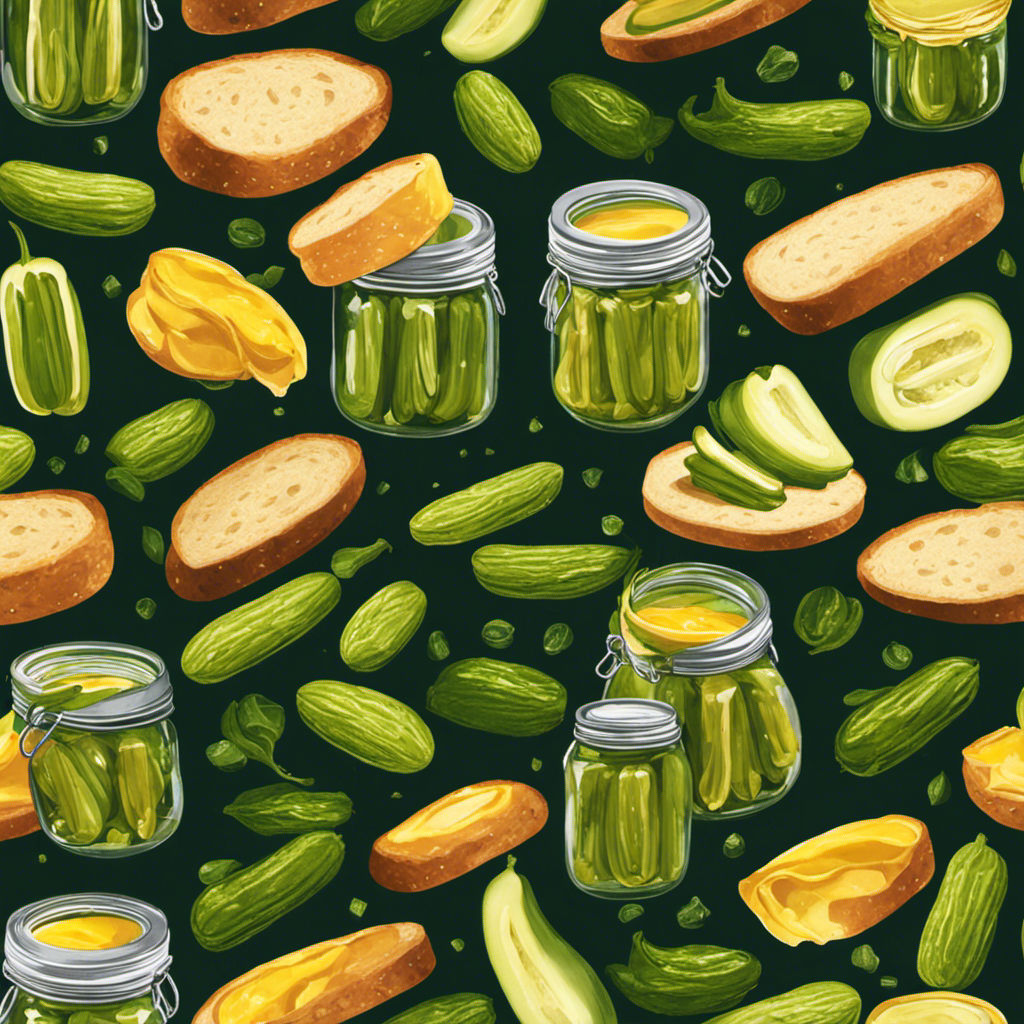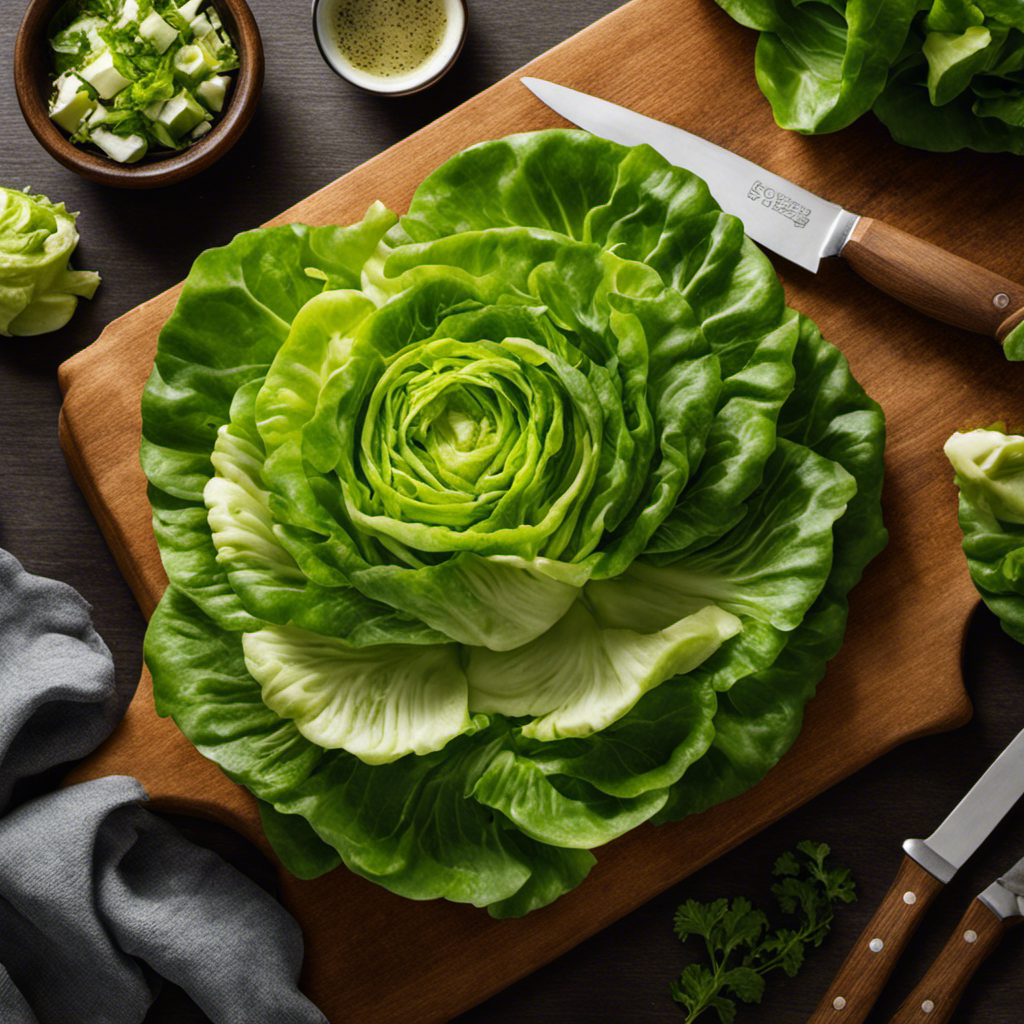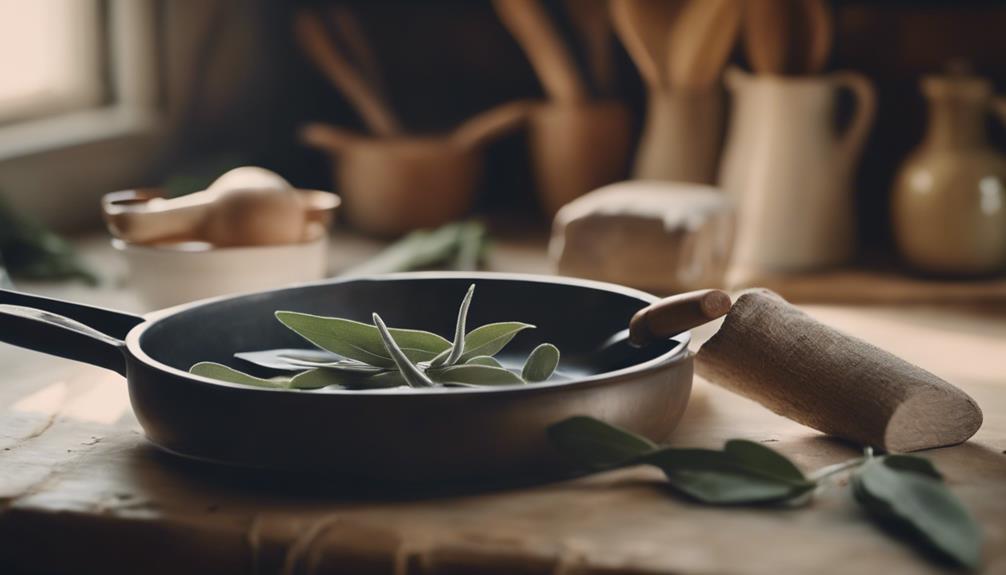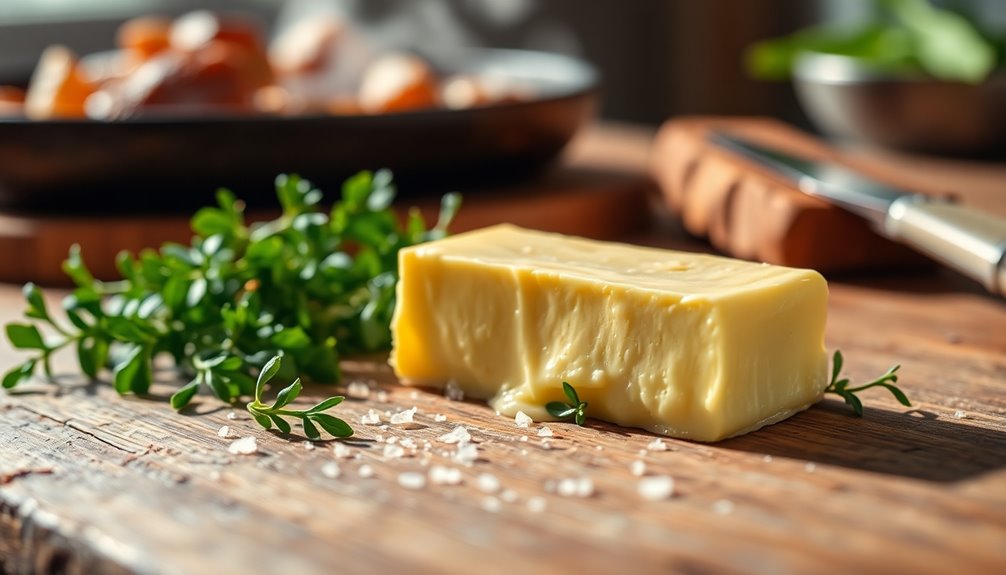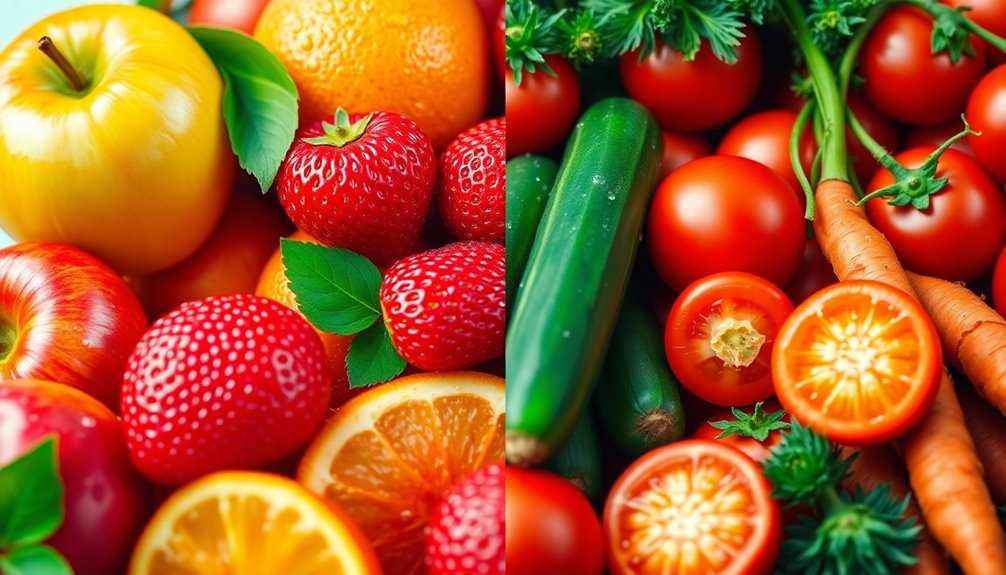I absolutely adore bread and butter pickles! Have you ever wondered why they are called that? Well, this article will delve into the fascinating history of bread and butter pickles.
We’ll explore their delicious sweet and tangy flavor profile, and even compare them to dill pickles.
We’ll also discuss their role in American cuisine, debate the homemade vs. store-bought dilemma, and discover creative ways to incorporate them into recipes.
And let’s not forget about the health benefits of these delectable pickles.
Get ready to have your taste buds tantalized and your pickle knowledge expanded!
Key Takeaways
- Bread and butter pickles got their name from the sweet and tangy flavor that complements bread and butter sandwiches.
- The origins of bread and butter pickles can be traced back to the Great Depression era in the United States when families used pickling cucumbers with a sweet and tangy brine to preserve them.
- Bread and butter pickles have a unique flavor profile that combines sweetness from sugar and vinegar with tanginess from mustard seed, celery seed, and turmeric.
- Bread and butter pickles have a sweeter taste compared to dill pickles and are often served alongside fried chicken, barbecue, and sandwiches in traditional Southern cuisine.
Historical Origins of Bread and Butter Pickles
So, let me tell you about the historical origins of bread and butter pickles.
These pickles have a fascinating historical significance and are deeply rooted in cultural traditions.
The term ‘bread and butter’ actually refers to the sweet and tangy flavor profile of these pickles, which perfectly complements bread and butter sandwiches.
The origins of bread and butter pickles can be traced back to the Great Depression era in the United States.
During this time, families had to make the most of their limited resources, and pickling cucumbers with a sweet and tangy brine became a popular way to preserve them.
This method of pickling became known as ‘bread and butter pickles’ due to their association with simple, frugal meals.
Now, let’s delve into the sweet and tangy flavor profile of bread and butter pickles.
The Sweet and Tangy Flavor Profile of Bread and Butter Pickles
The sweet and tangy flavor of these pickles is what makes them so popular. Bread and butter pickles have a unique flavor profile that sets them apart from other varieties. The sweetness comes from a combination of sugar and vinegar, while the tanginess is derived from the addition of mustard seed, celery seed, and turmeric. These ingredients work together to create a perfectly balanced flavor that is both refreshing and satisfying.
The sweetness adds a touch of indulgence, while the tanginess adds a zesty kick that complements a wide range of dishes. Whether enjoyed on a sandwich, in a salad, or straight from the jar, the delicious flavor of bread and butter pickles is sure to leave your taste buds craving more.
Now, let’s explore the differences between bread and butter pickles and dill pickles.
Differences Between Bread and Butter Pickles and Dill Pickles
Bread and butter pickles have a sweeter taste compared to dill pickles. While both types of pickles are made from cucumbers and brine, they differ in their flavor profile. Bread and butter pickles are known for their sweet and tangy taste, thanks to the addition of sugar, vinegar, and spices like mustard seeds and turmeric. On the other hand, dill pickles have a more savory and tart flavor, as they are made with dill weed, garlic, and dill seeds. The contrasting flavors of these pickles make them suitable for different culinary applications. To illustrate the differences, here’s a table that highlights the unique characteristics of bread and butter pickles and dill pickles:
| Bread and Butter Pickles | Dill Pickles |
|---|---|
| Sweet and tangy flavor | Savory and tart flavor |
| Made with sugar, vinegar, and spices | Made with dill weed, garlic, and dill seeds |
| Great for sandwiches and burgers | Perfect for adding a tangy kick to salads and sandwiches |
| Lighter and crunchier texture | Crisp and bracing texture |
| Popular in Southern cuisine | Commonly used in deli-style sandwiches |
Understanding the differences in flavor profile between bread and butter pickles and dill pickles allows you to choose the pickle that best complements your dish or craving.
The Role of Bread and Butter Pickles in American Cuisine
If you’re looking to explore the role of bread and butter pickles in American cuisine, you’ll discover their unique ability to add a sweet and tangy flavor to a variety of dishes.
Pickles have long been a staple in American cuisine, and bread and butter pickles hold a special place in this culinary tradition. These pickles are made from cucumbers that are sliced, brined, and then pickled in a mixture of vinegar, sugar, and spices.
Their cultural significance lies in their association with traditional Southern cuisine, where they are often served alongside fried chicken, barbecue, and sandwiches. The sweet and tangy flavor of bread and butter pickles perfectly complements the savory dishes in which they are served. As an essential condiment, they add a refreshing contrast and balance to the overall taste of a meal.
Now, let’s delve into the debate of homemade vs. store-bought bread and butter pickles: which is better.
Homemade Vs. Store-Bought Bread and Butter Pickles: Which Is Better
When it comes to choosing between homemade and store-bought, you’ll find that the taste and quality of bread and butter pickles can vary significantly.
The homemade vs. store-bought debate often revolves around personal flavor preferences in pickles. Homemade bread and butter pickles offer a unique flavor that is hard to replicate. They are typically made using fresh cucumbers, onions, sugar, vinegar, and spices. The process involves soaking the cucumbers in a brine solution, which allows them to absorb the flavors over time.
On the other hand, store-bought bread and butter pickles are mass-produced and often contain additives and preservatives to prolong their shelf life. While they can be convenient, the flavor and texture may not be as satisfying as homemade ones.
Ultimately, the choice between homemade and store-bought bread and butter pickles comes down to personal preference and the level of effort one is willing to put in for a truly delicious pickle experience.
Creative Ways to Use Bread and Butter Pickles in Recipes
You’ll be surprised at the unique and delicious flavor that bread and butter pickles add to a variety of recipes. These tangy and sweet pickles can elevate the taste of any dish with their distinct flavor profile.
Here are three creative serving suggestions and unique flavor combinations to try with bread and butter pickles:
- Sandwiches: Add a few slices of bread and butter pickles to your favorite sandwich for an extra burst of flavor. The combination of the pickles’ sweetness and tanginess pairs perfectly with meats, cheeses, and spreads.
- Salads: Dice up some bread and butter pickles and toss them into your favorite salad for a refreshing and unexpected twist. The pickles’ unique flavor adds depth and complexity to the overall taste of the salad.
- Appetizers: Use bread and butter pickles as a topping for sliders, bruschetta, or crostini. The combination of the pickles’ sweet and sour taste with other ingredients creates a mouthwatering appetizer that will impress your guests.
Incorporating bread and butter pickles into your recipes opens up a world of exciting and delicious possibilities.
Now, let’s explore the health benefits of consuming bread and butter pickles.
Health Benefits of Consuming Bread and Butter Pickles
When it comes to discussing the health benefits of consuming bread and butter pickles, it is important to understand the nutritional value breakdown. These pickles are low in calories and fat, making them a great option for those looking to maintain a healthy diet.
Additionally, bread and butter pickles contain antioxidants, which can help protect the body against harmful free radicals.
Nutritional Value Breakdown
The nutritional value breakdown of bread and butter pickles shows that they are low in calories and fat. Here is a breakdown of their nutritional content:
- Low in Calories: Bread and butter pickles are a great option for those looking to watch their calorie intake. With only about 25 calories per serving, they can be enjoyed guilt-free as a snack or added to your favorite dishes.
- Low in Fat: These pickles are also low in fat, making them a healthier choice compared to other high-fat snacks. They contain less than 1 gram of fat per serving, which is ideal for individuals trying to maintain a balanced diet.
- Antioxidant and Digestive Health Benefits: Bread and butter pickles are made from cucumbers, which are rich in antioxidants. These antioxidants help protect the body against free radicals and reduce the risk of chronic diseases. Additionally, the vinegar used in the pickling process can aid in digestion and improve gut health.
Overall, bread and butter pickles offer a tasty and nutritious option for those looking to enhance their diet with antioxidant benefits and promote digestive health.
Antioxidant Properties Explained
Cucumbers, which are used to make these pickles, contain antioxidants that can protect against free radicals and reduce the risk of chronic diseases. Antioxidants are compounds that help neutralize harmful molecules in our bodies, known as free radicals. These free radicals can cause damage to cells and contribute to the development of chronic diseases such as heart disease and cancer.
Research has shown that cucumbers are rich in antioxidants, particularly flavonoids and lignans. These antioxidants have been linked to various health benefits. They work by scavenging free radicals and preventing oxidative stress in the body.
In addition to their antioxidant properties, cucumbers are also versatile in the culinary world. They can be enjoyed in salads, sandwiches, or even as a refreshing snack. So, not only are bread and butter pickles delicious, but they also provide a dose of antioxidants to support our overall health.
Potential Digestive Benefits
Cucumbers offer several potential digestive benefits. Firstly, their high water content and fiber can aid in digestion and promote regular bowel movements. The water in cucumbers softens stools, making them easier to pass and preventing constipation. Additionally, the fiber in cucumbers adds bulk to the stool, further aiding in digestion and promoting regular bowel movements.
Secondly, cucumbers can support weight loss efforts. They are low in calories and high in water, making them a great addition to a weight loss diet. The fiber in cucumbers also helps to keep you feeling full for longer, reducing the chances of overeating and aiding in weight loss.
Lastly, cucumbers can have a positive impact on the gut microbiome. They contain compounds that can have a prebiotic effect, promoting the growth of beneficial bacteria in the gut. This can help improve overall gut health and may have a positive impact on digestion and nutrient absorption.
Frequently Asked Questions
Are Bread and Butter Pickles Made With Actual Bread and Butter?
No, bread and butter pickles are not made with actual bread and butter. They are called bread and butter pickles because they were traditionally served with bread and butter as a side dish.
How Long Do Bread and Butter Pickles Typically Need to Pickle Before They Are Ready to Eat?
Typically, bread and butter pickles need to pickle for about 24-48 hours before they’re ready to eat. The name comes from the sweet and tangy flavor that pairs perfectly with sandwiches, like bread and butter.
Can Bread and Butter Pickles Be Made Using Different Types of Cucumbers?
Bread and butter pickles can be made using different cucumber varieties. Some popular choices include English cucumbers, Kirby cucumbers, and Persian cucumbers. The pickling techniques remain the same, but the taste and texture may vary slightly.
Are There Any Specific Regions in the United States Where Bread and Butter Pickles Are Particularly Popular?
Popular regions for bread and butter pickles include the Midwest and Southern United States. Variations in recipes can be found, but the name “bread and butter” refers to the sweet and tangy flavor profile.
Can Bread and Butter Pickles Be Used as a Substitute for Dill Pickles in Recipes?
Yes, bread and butter pickles can be used as a substitute for dill pickles in recipes. While they have a slightly sweeter flavor profile, they still provide a tangy crunch that complements many dishes.
Conclusion
In conclusion, bread and butter pickles have a rich history and a unique flavor that sets them apart from other pickles.
They have become a staple in American cuisine, adding a sweet and tangy touch to sandwiches, burgers, and salads.
Whether homemade or store-bought, these pickles offer a delightful crunch and a burst of flavor.
So, next time you’re looking for a tasty addition to your meal, don’t forget to grab a jar of bread and butter pickles – they’re the ‘cherry on top’ that will elevate your dish to a whole new level.
